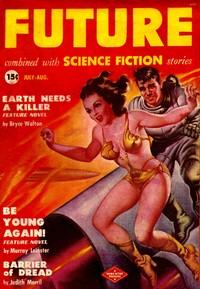|
|
Read this ebook for free! No credit card needed, absolutely nothing to pay.Words: 35045 in 15 pages
This is an ebook sharing website. You can read the uploaded ebooks for free here. No credit cards needed, nothing to pay. If you want to own a digital copy of the ebook, or want to read offline with your favorite ebook-reader, then you can choose to buy and download the ebook. pponent's discussion. When you have mastered the one branch of the case you are equipped to meet the other, for the two are identical. THE BRIEF Suppose you have decided to debate one phase of the child labor problem, and your question reads something like this: "Resolved: that no children below the age of sixteen years should be allowed to work in factories." You see the question omits all discussion of child labor on the farm, for instance, or in the street trades, or in any occupation except those within doors under factory conditions. You will see, also, that before you begin your actual analysis, you and your opponents must agree on what you mean by "factories"--just what kind of manufacturing establishments you have in mind. Otherwise you would be compelled to define them more carefully in the question itself as you stated it. For two reasons, you need the "brief" at this stage of your analysis. To discuss the least important one first--you should inform your critical friend or teacher as to just what your argument is. You must tell him what are the bones of the skeleton, indicate their arrangement, and show them to him without the beautiful covering of flesh and skin to be given them by your charming diction and eloquence. The bones may not be properly articulated at all--what, when clothed with the flesh and muscle of your finished debate, may seem like a strong right arm adequately equipped with biceps and all the rest of the blow delivering agencies may not be properly joined at the shoulder and hence fail utterly, when the test comes. So let your friendly critic--your specialist in this kind of anatomy--see just what you have and how your various arguments hang together. So not only for the benefit of your critic but especially for the value of the exercise to yourself, reduce your argument to definite formal organization. You will be paid in the long run. You may have such a command of yourself and your thinking that you can carry all this organization in your head without any brief--but most of us can't. Moreover, you will find that putting these arguments down in black and white before you and then arranging them in causal logical sequence will aid your thinking immensely. Thoughts which were dim and misty, which were without form and substance, will fall into order and assume a relation to the whole subject unseen before. One other observation about the form of this "brief." It should be so arranged that, using the words "for" or "because" to introduce your arguments, you will have a complete clause, with subject and predicate. You will note that clauses occur in the brief given below. I have connected them with their proper prepositions. Subdivision I gives us: "Resolved: that no children below the age of sixteen should be allowed to work in factories, for such labor is unnecessary, for there is an ample supply of adult labor entirely adequate to the demands of factory work." Let me hint, too, that frequently after you have arranged what seems to be a perfect logical argument, if from under each head you remove the proof and connect the various sequences so that you form one sentence, you will find that it is not logical and must be arranged all over again. "The report of Massachusetts Board of Education says: 'The fact that 41.3 per cent. of those employed in the textile industry receive less than a week accounts, in large part, for the idleness among boys from eighteen to twenty-one years of age. There is no system of training in the mill which fits those on low paid, unskilled work, for the skilled work of the mill. Only 21 per cent. of the textile workers who have been in the business six years earn or more, and a negligible percentage of those who work in candy factories earn this amount. Only 21 per cent. of the shoe workers earn less than a week at six years out.... Monotonous work, especially that which requires great speed and uses up nervous energy, should not be done for any long period by young people under eighteen years of age, and the years up to this time should be spent in physical and mental upbuilding in preparation for the years of industrial life to come.'" "A recent investigation of the Federal Bureau of Labor declares of a certain number of children under sixteen years who left school to work, that 90 per cent. entered industries in which the wages of adults were a week or less. A vocational survey in New York exhibits in one group one hundred and one boys between fourteen and sixteen years and an analysis of the work they are doing. In only five cases was there any opportunity for them to advance or improve; ninety-six were in dead end occupations." "One woman, in Georgia, thirty-four years of age, but looking fifty, told me she had gone to the mill when she was nine years of age, and had been there ever since. She hated the very thought of working in the mill and from all appearances was ready for the scrap heap. She said when she was nine years old nothing could have kept her out of the mill and for two or three years after that she said she always listened for the whistle to blow so that she could go to work and it never blew too early for her. She said she wished she could get now where she could never hear the whistle blow. She makes about ninety cents per day when she works." "The boys come from the common schools. Reports show that they are sons of clerks, shopkeepers, shoemakers, tailors, chauffeurs, laborers, machinists and other workmen. A boy's earning capacity in Beverly is liberally estimated at a week, which capitalized on a 5 per cent. a year basis represents a working capital value of ,000 a year. The wage earning capacity of boys, after two and a half or three years of this public schooling, is to a week. Capitalized on a 5 per cent. basis, this shows the marvelous increase from ,000 to ,000 to ,000 a year working capital. Free books android app tbrJar TBR JAR Read Free books online gutenberg More posts by @FreeBooks
: Be young again! by Leinster Murray Stevens Lawrence Sterne Illustrator - Science fiction; Swindlers and swindling Fiction; Alchemy Fiction@FreeBooksThu 08 Jun, 2023

: The writings of Origen Vol. 1 (of 2) by Origen Africanus Sextus Julius Contributor Crombie Frederick Translator - Theology History Early Church ca. 30-600; Celsus (Platonic philosopher) active 180; Apologetics History Early church ca. 30-600@FreeBooksThu 08 Jun, 2023
|
Terms of Use Stock Market News! © gutenberg.org.in2025 All Rights reserved.






